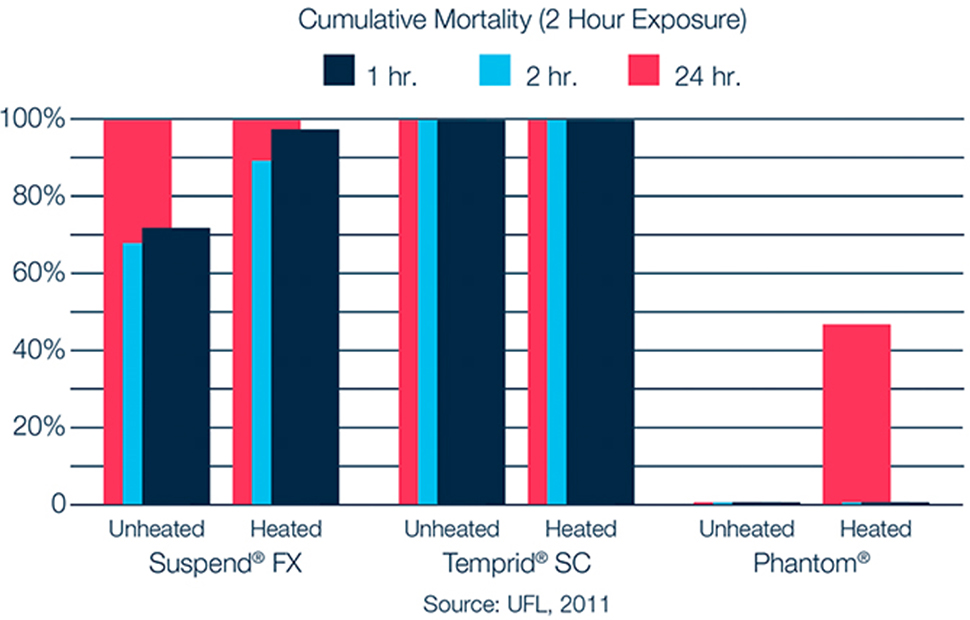Temprid<sup>®</sup> FX & Bed Bug Heat Treatments
Many Pest Management Professionals (PMPs) have incorporated ‘heat treatment’ into their bed bug management service. Although heat can be effective in killing exposed bed bugs, it is difficult to promise eradication of the infestation using heat alone.
In heated areas, bed bugs will actively seek out ‘cold sinks’, areas that don’t reach mortal temperatures. These survival harborages include wall voids, under carpets, and inside furniture hollows. PMPs agree that even when using heat, applications of residual insecticide liquids and dusts are required to provide successful bed bug elimination.
Heat treatments generally raise room temperatures to 120°-140° Fahrenheit, and hold the elevated temperatures for a period of four, or more, hours. Some PMPs have expressed concern over the impact these environmental conditions have on residual deposits of liquid insecticides and dust formulations.
Envu has addressed issues where confusion between data read from product Material Data Safety Sheets (MSDS) was incorrectly interpreted between Fahrenheit and Centigrade (Celsius) scales. Reading the melting point of an active ingredient off a MSDS may initially cause concern where it may occur at a temperature that appears to fall in a heat treatment range. However, melting points on Envu’s MSDS are reported in degrees Centigrade. A melting point of 140°C is equivalent to 284°F, well below the effective temperature range of a bed bug heat treatment.
A research trial was performed by University of Florida researchers Dr. Phil Koehler and Dr. Roberto Pereira in June, 2011. In this trial, applications of residual insecticides and dusts were made on wood panels and allowed to dry (liquids) overnight. Half of the treated panels were exposed for eight hours to a temperature of 140°F. The heated panels were then allowed to acclimate back to room temperature overnight. Bed bugs were placed in arenas on both the heated and unheated treated panels, allowed to remain on the treated surfaces for two hours and then removed to a clean, untreated arena. The number of dead, knocked down, and live bed bugs were observed and recorded after exposure.
The conclusions of the trial are clear:
// The eight-hour exposure to 140°F is a robust simulation of actual practice in heat remediation, where heat exposure typically only lasts for 3-4 hours and temperatures rarely exceed 125°F.
// No liquid insecticide applied to the wood surface and then subjected to artificial heating, suffered any degradation of efficacy.
// Complete mortality was provided at 24 HAT by all liquid treatments (including Temprid® FX, except Phantom®).
// None of the dust formulations were negatively affected by the heating regime.
PMPs can apply Temprid FX and Envu dusts before heat treatments with full confidence that they will benefit from the full performance potential that our products deliver.
For more information, contact your local Envu Pest Management & Public Health Representative.
Phantom is a registered trademark of BASF.

